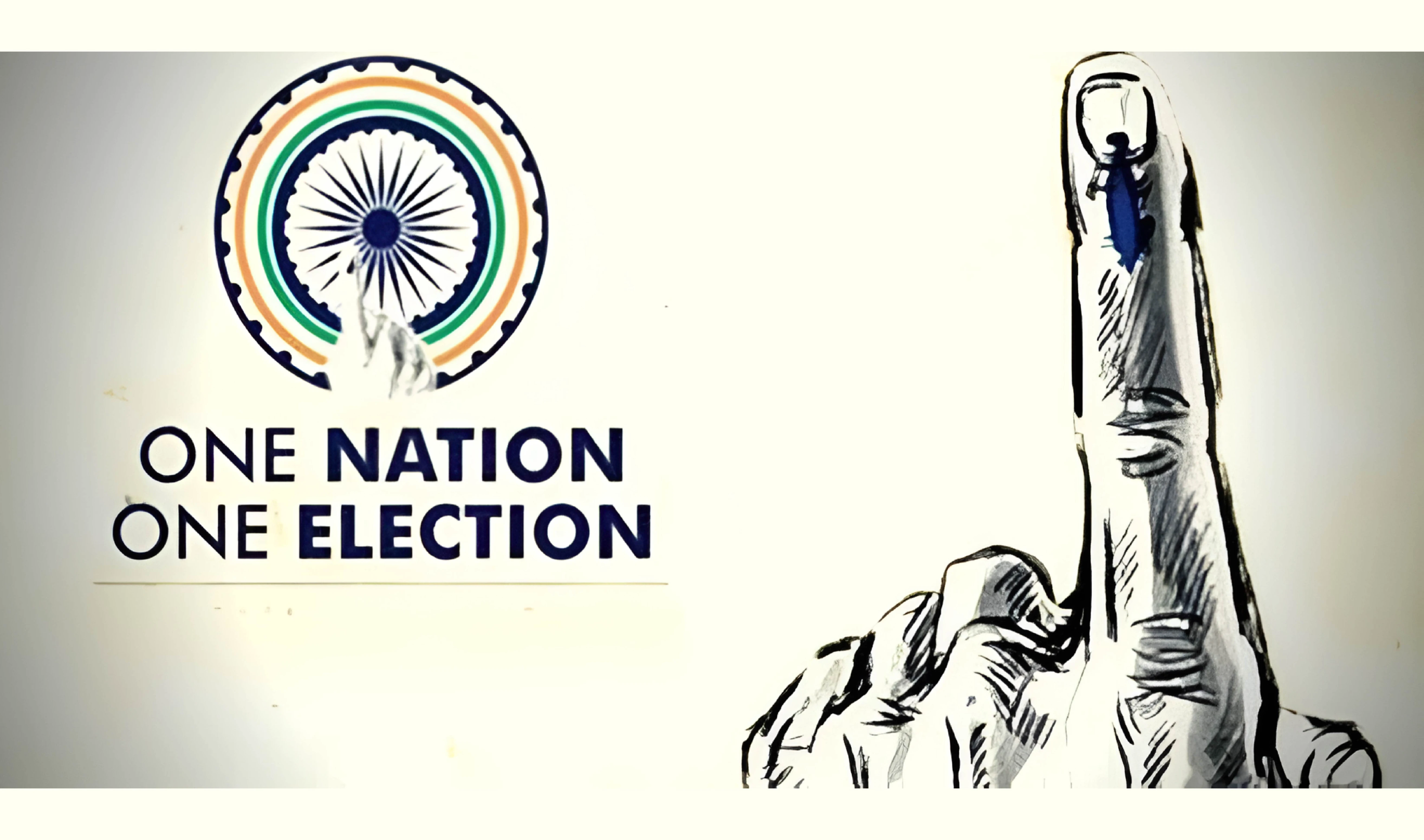Why in the news?
The Union Cabinet has accepted the recommendations of the High-Level Committee on Simultaneous Elections under the chairmanship of former President Shri Ram Nath Kovind.
About Simultaneous Elections
- Simultaneous Elections (popularly known as One Nation, One Election) means holding elections to the House of the People, all the State Legislative Assemblies, and local bodies i.e., Municipalities and Panchayats, together
- Simultaneous elections do not mean that voting across the country for all elections needs to happen on a single day.
- In India, simultaneous elections to the Lok Sabha and Vidhan Sabhas were held in the years 1951-52, 1957, 1962 and 1967.
- This cycle was disrupted due to premature dissolution of State Assemblies in 1968-69 and of the Lok Sabha in 1970.
Need for Simultaneous elections
- Governance and development: Frequent elections delay development programs due to the Model Code of Conduct (MCC).
- Frequent elections affect economic growth, investment decisions and opportunity cost of deferred economic decisions.
- Conducting elections to all three tiers of the Government together would avoid disruption of supply chains and production cycles due to migrant workers seeking leave of absence to cast their vote.
- High financial burden: Holding simultaneous elections would reduce the massive expenditure incurred for conduct of separate elections every year.
- Diversion of human resources: Such as security forces and other electoral officers (like Teachers) from their primary duties for significantly prolonged periods.
- Reducing the burden on courts: Fewer elections mean fewer election-related disputes, reducing the workload on courts.
- Reducing identity politics: Frequent elections use identity politics, like caste and class stirring division and disrupting societal cohesion.
- Voter participation: Staggered elections induce 'voters' fatigue' and present a significant challenge in ensuring their participation.


Key highlights of High-Level Committee on Simultaneous Elections
The committee advocated simultaneous elections for Lok Sabha, State Legislative Assemblies, and local bodies to address the burden on the Government, businesses, Courts, political parties, civil society etc. due to frequent elections. Recommendations are as follows:
- Synchronization of Elections: Elections to be held in two phases
- First phase: Conduct Lok Sabha and State Legislative Assembly elections simultaneously.
- Second phase: Conduct local body elections (Panchayats and Municipalities) within 100 days of general elections.
- Constitutional Amendments proposed: The high-level committee had proposed amendments to three Articles, insertion of 12 new sub-clauses in the existing articles and tweaking three laws related to Union Territories having legislative assemblies.
Insert Article 82A | Amendment of Article 83 (Duration of Houses of Parliament) and Article 172 (Duration of State Legislatures): | Introduction of Article 324A |
|
|
|
- Single electoral roll: To be prepared by the Election Commission of India in consultation with the State Election Commission(s) by amending Article 325.
- As it includes amending State subjects (Local Government) in the 7th Schedule, Part IX, and Part IXA of the Constitution of India, ratification by the States required under Article 368(2).
- Need for ratification by states: The Committee observed that constitutional amendments in relation to terms of Parliament and state assemblies will not require ratification by states. However, constitutional amendments in relation to local bodies will be required to be passed with ratification by at least half of the states.
- Making Logistical arrangements for conduction of Simultaneous Elections
- For elections to the House of the People and State Legislative Assemblies: The Election Commission of India will draw a plan for advanced estimation of procurement of EVMs/VVPATs, deployment of polling personnel, security forces etc.
- For elections to Municipalities and Panchayats: The State Election Commission(s) in consultation with the ECI, will draw a plan for the logistical requirements.
- Constitution of an Implementation Group to monitor the execution of the process.
Challenges and complexities of simultaneous elections
- Overshadowing regional issues: Conducting elections simultaneously to the Lok Sabha and all State assemblies would result in national issues overshadowing regional and State specific issues.
- Impact on the Regional parties: Simultaneous elections may create a system where National political parties would have a significant advantage over regional parties.
- Political accountability: Frequent elections hold lawmakers accountable, while fixed terms may provide unwarranted stability without performance scrutiny challenging democratic principles.
- Concerns Regarding Federalism: Constitutional Amendments concerning the term of the state legislative assemblies under Article 172 can be carried out without ratification by states. Thus, opinion and say of States is reduced.
- Logistical Issues: Organizing ONOE would require significant resources, including a vast supply of electronic voting machines and trained personnel to oversee the process.

Conclusion
A delicate balance between the efficiency gains of simultaneous elections and the foundational principles of federalism, democratic integrity, and political plurality needs to be ensured through detailed legislative deliberations.






